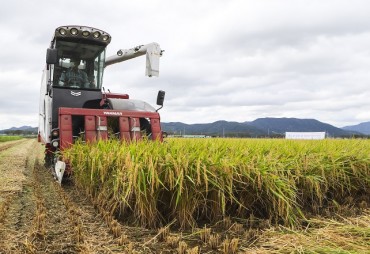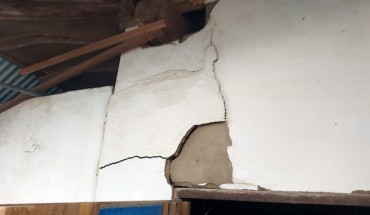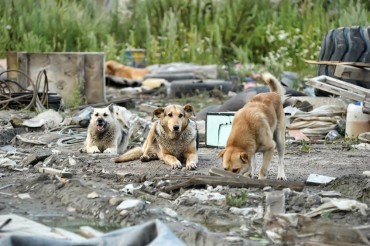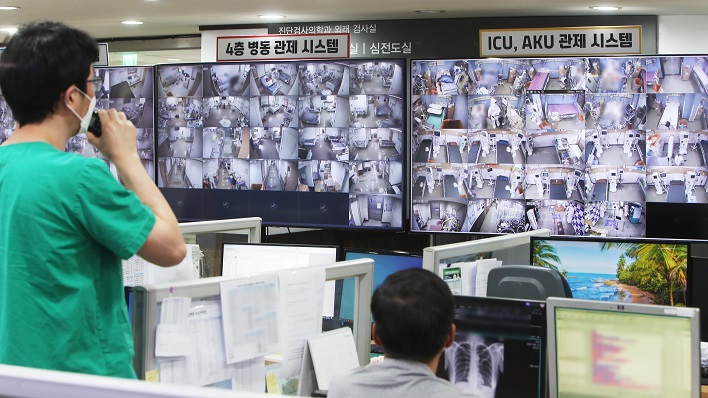
This photo taken on Aug. 19, 2021, shows medical staff monitoring patients at Bagae Hospital in Pyeongtaek, 70 kilometers south of Seoul, amid the spreading COVID-19 pandemic. (Yonhap)
SEOUL, Aug. 20 (Korea Bizwire) — South Korea’s daily new coronavirus cases remained in the 2,000s for the second straight day Friday amid little signs of letup, triggering the extension of the toughest level of virus restrictions for two more weeks.
The country added 2,052 more COVID-19 cases, including 2,001 local infections, raising the total caseload to 232,859, according to the Korea Disease Control and Prevention Agency (KDCA).
The daily caseload reached 2,152 the previous day, the second-largest number recorded since the COVID-19 outbreak in January last year after posting a record high of 2,222 on Aug. 11.
Daily cases exceeded 1,000 for the first time on July 7 and have stayed above 1,000 for 45 days in a row.
The country added six more deaths from COVID-19, raising the death toll to 2,197. The fatality rate was 0.94 percent.
Later in the day, health authorities and local governments said 1,753 additional cases were confirmed from 12 a.m. to 9 p.m. Friday, 17 fewer than at the same time the previous day.
Daily cases will be counted until midnight and announced the following morning.
While the current social distancing measures were set to expire Sunday, authorities decided to maintain the curbs until Sept. 5 as the fourth wave of the pandemic has yet to come under control.
“The adoption of the toughest distancing rules helped prevent the worst case scenario, but there is still a possibility of an explosive spread of COVID-19,” health authorities said in a briefing.
The KDCA said the more transmissable delta virus variant is quite threatening so it won’t rush to ease the distancing rules.
The health agency said it may consider drawing up the “With Corona” plans in late September or October.
The greater Seoul area will be under the Level 4 social distancing rules, while most other regions will be subject to Level 3.
Restaurants and cafes in regions under Level 4 distancing rules will be required to close at 9 p.m., an hour earlier than the current 10 p.m. curfew starting Monday.
Only takeout and delivery services are available after that time, in accordance with Level 4 rules.
Private gatherings of three or more people are banned after 6 p.m. But gatherings of four, including two fully vaccinated people, will be allowed even after that time as part of the government’s “incentives for the inoculated.”
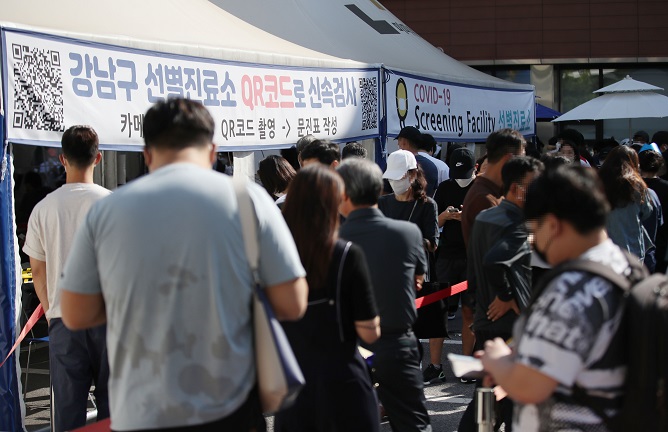
This photo taken Aug. 20, 2021, shows people waiting to receive a COVID-19 vaccine at a medical center in Gangnam, southern Seoul. (Yonhap)
Since early July, South Korea has been grappling with the current wave of the pandemic amid the fast spread of the more transmissible delta variant and slow vaccinations.
The greater Seoul area, the epicenter of the latest wave of the outbreak and home to half of the country’s 52 million people, has been under the Level 4 rules, the highest in the country’s four-tier system, since July.
The southern resort island of Jeju and some other regions have also been under the toughest virus restrictions.
On top of slow vaccinations, a delay in the vaccine supply by U.S. drugmaker Moderna Inc. has also prompted the decision to extend the current virus curbs.
Moderna recently notified the government it will supply less than half of the 8.5 million doses of its COVID-19 vaccine planned for August.
The supply setbacks have raised doubts over the government’s plan to administer at least the first shot to 70 percent of the population, or 36 million people, by September and to achieve herd immunity in November.
As of Friday, 24.81 million people, or 48.3 percent of the population, had received their first shots of COVID-19 vaccines, the KDCA said.
The number of fully vaccinated people stood at 11.10 million, or 21.6 percent.
Health authorities said around 26% percent, or 13 million, will be fully vaccinated by the end of this month, and the figure will rise to 47% next month.
Of the locally transmitted cases, Seoul reported 549 new cases, and Gyeonggi Province, which surrounds the capital city, identified 633 new patients.
The southeastern port city of Busan reported 131 more cases, and Incheon, 40 km west of Seoul, added 117 cases.
The number of new imported cases came to 51, raising the total to 13,045.
Cases from Asian countries except for China stood at 34, with seven cases from the United States, four from Europe, four from Africa, one from Brazil and one from Mexico.
The number of patients with serious symptoms across the country reached 385, down from 390 a day earlier, the KDCA said.
The total number of people released from quarantine after making full recoveries was 202,775, up 1,540 from a day earlier.
(Yonhap)



